I think you have plenty of options. Two easy approaches that come to my mind would be to threshold your input image on a low intensity value which will give you a white circle. Then you could run the Hough transform for circles on it to find the center.
Or you can use the distance transform of the thresholded white pixels and take the maximum of this distance transform:
# code derived from watershed example of scikit-image
# http://scikit-image.org/docs/dev/auto_examples/plot_watershed.html
import numpy as np
import matplotlib.pyplot as plt
from scipy import ndimage as ndi
from skimage.morphology import watershed
from skimage.feature import peak_local_max
from skimage.color import rgb2gray
from skimage.io import imread
img = imread('flame.png')
image = rgb2gray(img) > 0.01
# Now we want to separate the two objects in image
# Generate the markers as local maxima of the distance to the background
distance = ndi.distance_transform_edt(image)
# get global maximum like described in
# http://stackoverflow.com/a/3584260/2156909
max_loc = unravel_index(distance.argmax(), distance.shape)
fig, axes = plt.subplots(ncols=4, figsize=(10, 2.7))
ax0, ax1, ax2, ax3 = axes
ax0.imshow(img,interpolation='nearest')
ax0.set_title('Image')
ax1.imshow(image, cmap=plt.cm.gray, interpolation='nearest')
ax1.set_title('Thresholded')
ax2.imshow(-distance, cmap=plt.cm.jet, interpolation='nearest')
ax2.set_title('Distances')
ax3.imshow(rgb2gray(img), cmap=plt.cm.gray, interpolation='nearest')
ax3.set_title('Detected centre')
ax3.scatter(max_loc[1], max_loc[0], color='red')
for ax in axes:
ax.axis('off')
fig.subplots_adjust(hspace=0.01, wspace=0.01, top=1, bottom=0, left=0,
right=1)
plt.show()

Just to give you an idea how robust this method is, if I pick a very bad threshold (image = rgb2gray(img) > 0.001 -- far too low to get a nice circle), the result is almost the same:




